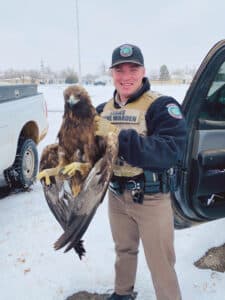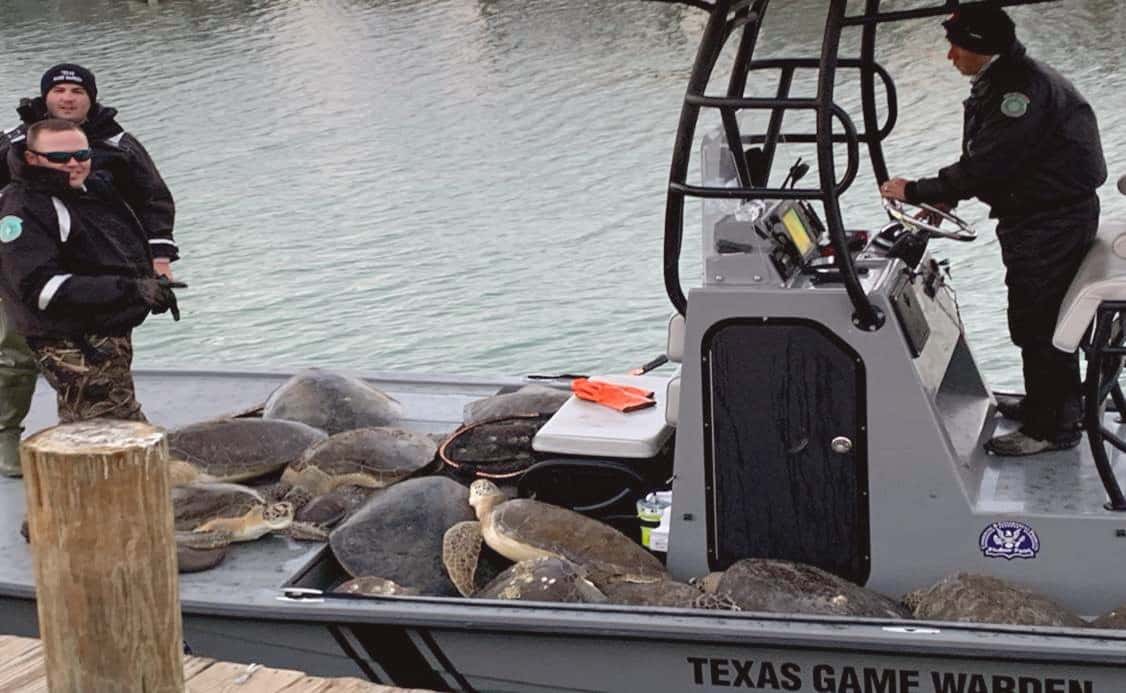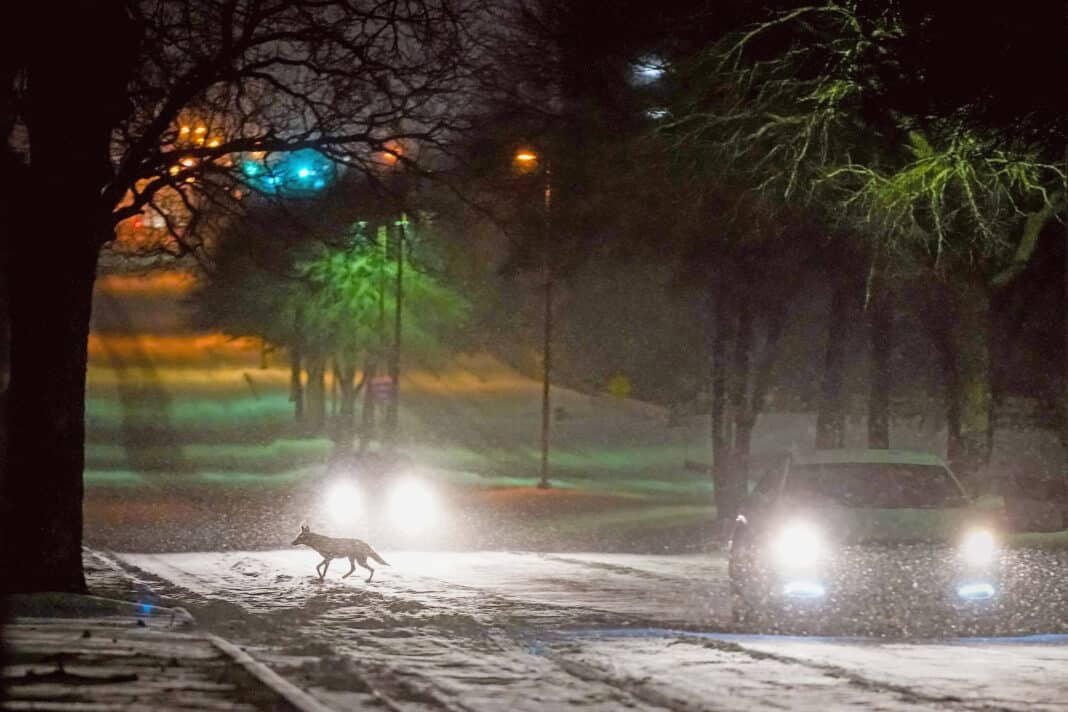Although some populations of the Rio Grande Valley’s inland wildlife species are likely to experience a negative impact from this week’s record breaking cold spell, a Texas Parks and Wildlife representative says — for the most part — those negative impacts should be marginal.
Tony Henehan, a TPWD biologist working in Weslaco, said for most Valley animals, survival will mostly be contingent on access to food and shelter, something that will be an achievable goal for many of them.
“That’s not to downplay the severity of this cold snap,” he said. “It does increase the need to stay warm and find cover, so we probably will see some decreases in some numbers of birds and such, but I wouldn’t say it’s significant — I don’t expect it to be significant.”
It will likely take months or years to gauge the significance of that impact. Henehan says TPWD surveys game species like dove, quail and deer. Other organizations monitor some of South Texas’ non-game species and may be able to indicate an impact there.
“If we have decreases in our survey numbers of doves, then that probably can be attributed to this cold event,” Henehan said.
Henehan does predict a significant but non-catastrophic impact on birds and insects. He said numbers of butterflies and moths will likely be diminished because of the storm, which will kill caterpillars and hurt the population of monarch butterflies that winter in the Valley.
“I think our insects are going to be hit the hardest, because that’s just the nature of the beast for them,” he said. “So we may see a decline for some of them and then a slow recovery as they start to kind of come back from it.”

Bird populations may be affected as well, although Henehan noted that many birds have coping mechanisms that could help them ride out the cold.
“People don’t actually realize this, but hummingbirds, they can actually go into a mini-hibernation state when it gets really cold,” he said. “Some of the South American hummingbirds do this every day of their lives where they live in the really high mountains where it gets very, very cold at night and their body just shuts down basically until the next morning.”
Someone called Henehan about a hummingbird by a feeder that wasn’t moving during the cold snap. That bird later disappeared. Henehan suspects it flew away after coming out of a stupor and eating some bird feed.
Access to food like that will help stave off a large scale die off in town, according to Henehan.
“That’s kind of mitigated in the urban environment because of all the feeders we have out, the food sources, the water,” he said. “Those sources kind of help mitigate against really bad effects like this.”
Birds attracted to readily available food after a cold spell like last week’s could be a short term boon to birders, Henehan said. Rare species come out of the woodwork during weather events like the one the Valley just experienced.
“We had someone here in Harlingen who has a hummingbird feeder and actually knows her hummingbirds pretty well, and she actually had a species that’s only found in the mountainous western United States,” Henehan said. “They migrate through, but we don’t normally see them this far east. It’s called a calliope hummingbird, and it actually showed up in her yard and it’s been feeding on her feeder throughout the cold front.”

Henehan does expect a significant impact on at least one coastal species. He says the storm could have a years-long effect on populations of sea turtles off the Texas coast.
“They’re so dependent on cold water that when that cold front came in it really shocked them, and from what I’ve heard, quite a few numbers are coming into rehabbers, they’re just working overtime to try to keep them going,” he said.
According to Henehan, that impact could be huge, but likely won’t be fully understood for years.
“It’s likely going to be this huge lag effect,” he said. “We’re not going to see, probably, an issue until five or ten years down the road when all the sudden we don’t have as many nests coming up.”
Inland reptiles should weather the storm more adroitly. Most can go days without eating which would help them survive the storm.
There may be a decline in rattlesnake populations, but Henehan said the endangered indigo snake — a burrowing snake — should have been able to find a warm spot to hunker out the cold.
“Generally, species that go underground during winter events do OK, so I think they’re going to do OK,” he said.
Henehan feels the Texas tortoise populations should be able to make it through alright as well, although he says that’s not completely clear. He said Texas tortoises just aren’t that well understood.
“We don’t know a ton about Texas Tortoises,” Henehan said.
Last week’s weather would have been unprecedented for many of those tortoises. On one hand, a respiratory disease that affects the species may have hurt some tortoises chances of survival, Henehan said. On the other hand, while Texas tortoises aren’t a burrowing tortoise per say, they dig a little hole to stick their front end in while they wait out a cold front.
“They do that throughout the year in normal years when we get cold fronts where it gets down to the 50s or the 40s for a couple of days,” Henehan said. “They hunker down and basically shut down.”
What impact the storm will have on the Valley’s bat population is also uncertain. Henehan said a moderate population of bats winter in the RGV, but said it wasn’t clear whether or not that population would take a significant hit.
“I think that could have a short term effect on the numbers of bats we have, but they’re also mobile — they could have just moved south,” he said.
The rest of South Texas’ mammal populations will likely make it through in decent shape. Outdoorsmen may see a decline in deer and squirrel populations that will lose smaller, weaker animals to the cold, but Henehan said those affects will be mitigated by the animals’ natural defenses and the relatively sunny days that followed below freezing nights in the Valley.
“I think our mammals are going to do OK,” Henehan said. “If there’s enough food on the landscape for them, their bodies can generate heat and get through.”
The same concept applies to the Valley’s predator mammals as well, including the ocelot. Less than 50 of the small cats remain in the U.S., but Henehan reasoned that what the ocelots eat indicates they’ll make it through.
“For them and a lot of predators, really the effects are going to be whether their food sources are being affected,” he said. “Those kind of cats that size are eating small rodents, and since they’re living in dense thornscrub, they have access to pack rats. I bet the pack rats are doing fine, which means the ocelots are probably going to be OK.”




